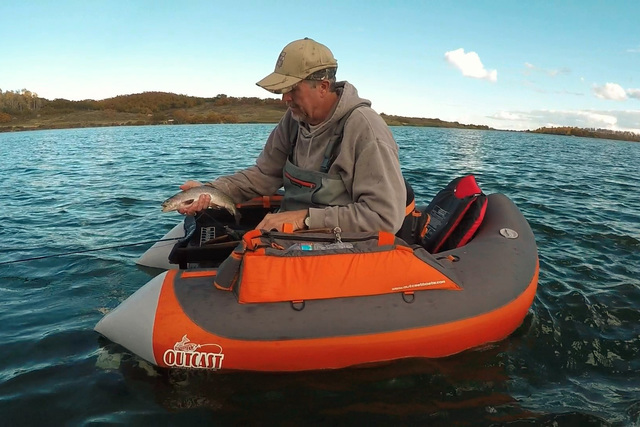Even an outdoors writer has his share of ‘fish stories’

On a recent trip to Utah’s Kolob Reservoir, I came to the realization that something I had long feared was, in fact, reality. This awareness came to me as I lay in a sleeping bag pondering the results of two nearly fruitless days of trout fishing.
For the second year in a row, my friends and I were successful in drawing a bonus point rather than a Nevada deer tag. This left a huge void in our October outdoor plans, so we opted to fill it with a trip to Kolob.
In 2015, five of us made this trip for the same reason, and though the fishing wasn’t fast and furious, it was steady, just enough to keep your head in the game. And most of the fish were in the 18- to 19-inch class with a 20-incher showing up occasionally.
One year later, I hoped to at least duplicate those results, if not improve things a little bit. Unfortunately, because of scheduling conflicts, Don and I were the only two who could make the trip.
Though we tried various fly patterns with some success on that 2015 outing, it was the Prince Nymph that brought the best results. And since I subscribe to the theory that you will generally find fish, deer or birds in the same place, doing the same thing at the same time every year, I made sure there were plenty of Prince Nymphs in my fly box before we hit the road.
One of the great things about fall trout fishing is the scenery. As we climbed the mountain toward our destination, the leaves on the trees began to change color. The higher we climbed, the wider the range of colors on the trees — yellow, orange, red and somewhere in between.
We stopped by the cabin where we would be staying just long enough to ready our float tubes and fly rods. Then we turned our attention to Kolob.
There were several camps already in place by the time we arrived at the shoreline, but we soon found a place with a gradual slope where we could easily launch the tubes and went to work. Don was on the water first and was already landing the first fish of the trip by the time I kicked away from shore. Such is usually the case.
I kicked my way toward a place where I had found success the year before, fully expecting to feel the hard hit of large rainbow trout at any moment. An hour later, I was still waiting, and Don was landing yet another fish. So I kicked my tube in his direction so I could find out what he was doing that I was not. Perhaps he had changed flies, or maybe he was using a different cadence to strip in his fly.
As I kicked lazily along, a fish hammered the Prince Nymph. My line went straight, and the fish pulled the rod tip down into the water. The hit was so solid that at first I thought the fish was a snag, but the unmistakable tug that followed let me know it was a fish. And not just any fish. This was a good fish.
I remembered the GoPro camera strapped to my head and reached up to get it rolling. This was going to be awesome, I thought as the fish and I did battle. Not only would I catch a big fish on the fly but also on film, so to speak.
After several minutes, I finally managed to net the fish, a large rainbow that stretched from one end of my stripping basket to the other. He was beautiful with a broad reddish stripe along his side. His girth was such that I had a hard time holding him up for the camera, and he wasn’t about to lay still. Then, just when I thought he would calm down long enough for a picture, he flexed his tail and was gone. At least I would have the GoPro video, or so I thought.
That’s when I learned that new technology and a mature angler don’t necessarily go hand in hand. Somehow I had never started the camera, and the story of my big rainbow trout would go down in the annals of fishing as just another fish story.
While I created fish stories, Don when about doing what a fish whisperer does. He caught fish. By the time our trip was over, I managed to land just four fish in two days. Don landed multiples of that. I’m not complaining; my fish were all good and definitely worth the trip, but one of these days, I’m going to figure out Don’s secret.
As I laid awake that night and pondered the secret of angling success, I came to understand the art of angling is comprised of two primary components, one being fishing and the other catching.
But the two don’t always come wrapped together in a neat bundle with a tidy ribbon. Sometimes we just go fishing, and sometimes we also have the opportunity to do some catching.
Next time I hope to do a little more catching.
Freelance writer Doug Nielsen is a conservation educator for the Nevada Department of Wildlife. His “In the Outdoors” column, published Thursday in the Las Vegas Review-Journal, is not affiliated with or endorsed by the NDOW. Any opinions he states in his column are his own. He can be reached at intheoutdoorslv@gmail.com.